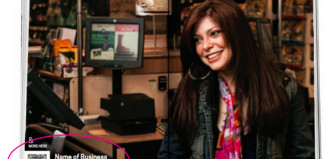We love our urban hangouts, but we also appreciate the opportunity to take our pups out and about in wide-open spaces to catch a stray tennis ball, frolic in waterscapes and chase new friends down trails on a lovely summer afternoon. When proper protocol is in place, dog parks can provide a welcome respite from the confines of city living.
Understanding dog communication is a key piece to a successful integration into the dog park pack. The vast majority of the etiquette tips for the park are common sense if you know your own dog well and have a decent sense of canines in general. Knowing that many dogs play by yapping, mouthing, barking or growling will help you avoid being a helicopter dog-parent. It is important to recognize by sight and sound when your pooch is reaching his threshold of play. A responsible human can tell what a warning snap sounds like and will be able to see if the offender understood and changed his egregious behavior.
Dogs are naturally pack animals and will first attempt to sort out the order of dominance through body language. If this doesn’t go smoothly, aggression can be born out of their need for order. Always watch for a stiff-legged posture, raised hackles, ears pulled back or attempts to mount. These behaviors are often indicators that the playing has shifted to a more serious tone and all dogs involved should take some space. If your pup is having trouble settling in after an altercation or near- miss, it’s best to pack up for the day. This is not only a safety issue, but it will also help your dog to know which behaviors earn extended play and which will have them on leash and out the gate.
Don’t be an absentee dog park parent. Staying attentive is the best way to be sure that your pup is appropriately socialized with the other four-leggeds present. You’ll want to be as equally aware of your dog becoming a bully as your dog being bullied. No matter the size or breed, both of these situations can come up at any time. If your dog is interested in playing with a pooch who is still on leash, hasn’t fully entered play or is taking a break from the group, take advantage of the teachable moment. Call yours off and respect the leashed pup’s privacy. Trust, you’d want someone to do the same if it was your baby trying to take a knee.
Go to the park prepared to spend quality time with your favorite four- legged friend. If your dog is all about chasing a bouncing tennis ball or finding floating toys in the lake, you’ll want to bring a basket of goods. Take toys that your dog enjoys but doesn’t mind sharing. It’s common for dog park parents to leave with a squeaking plastic duck when they arrived with a squishy shark. If your dog has a special attachment to one, irreplaceable toy, leave it at home.
|
Dear pet professional, I’d like to start taking my dog Nelson to a dog park. We have recently mastered a “come when called” command and i think he may be ready for this next step in socialization. There are several off-leash parks in my area, but i’m just not sure what to expect. Can you give me some things i should know before i go? Sincerely, Dedicated Dog Dad |
|
Dear Dedicated Dog Dad, I’m so glad you wrote in! There are too many folks who don’t understand the variety of etiquette pieces that come into play at dog parks. Below you’ll see my top 10 list of bite-sized tips to keep in mind before your first adventure to a local dog park. Note any posted regulations as well, but this list of etiquette rules will get you started:
|


































